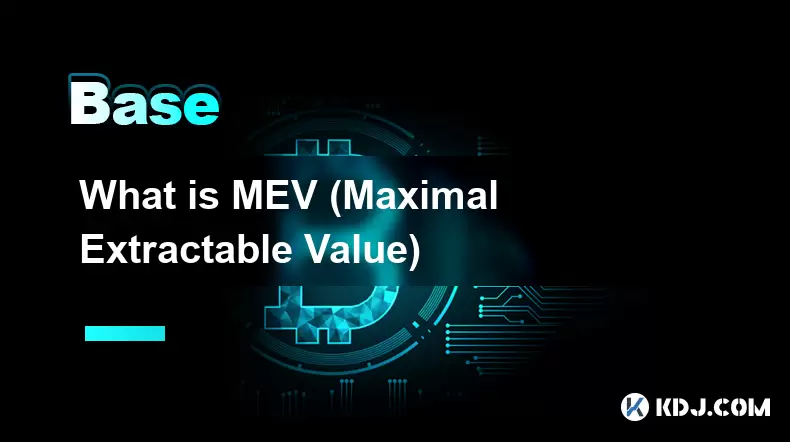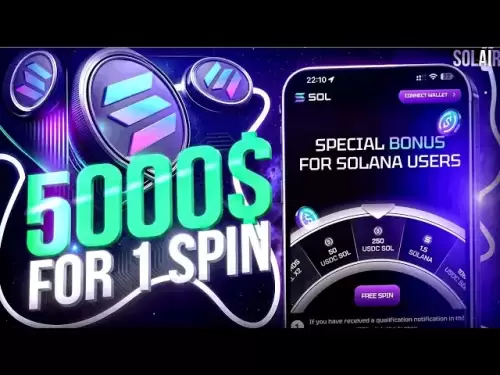-
 Bitcoin
Bitcoin $121,528.0299
2.98% -
 Ethereum
Ethereum $3,068.2796
3.56% -
 XRP
XRP $2.9875
7.26% -
 Tether USDt
Tether USDt $1.0001
-0.01% -
 BNB
BNB $704.3033
2.01% -
 Solana
Solana $166.8292
2.88% -
 USDC
USDC $0.9998
0.00% -
 Dogecoin
Dogecoin $0.2063
3.87% -
 TRON
TRON $0.3027
-0.01% -
 Cardano
Cardano $0.7480
2.62% -
 Hyperliquid
Hyperliquid $48.3868
0.88% -
 Stellar
Stellar $0.4534
6.74% -
 Sui
Sui $3.9316
14.29% -
 Chainlink
Chainlink $16.2437
5.70% -
 Bitcoin Cash
Bitcoin Cash $513.4177
1.89% -
 Hedera
Hedera $0.2398
4.90% -
 Avalanche
Avalanche $21.7489
2.41% -
 UNUS SED LEO
UNUS SED LEO $9.0122
-0.22% -
 Shiba Inu
Shiba Inu $0.0...01375
3.85% -
 Toncoin
Toncoin $3.0263
0.37% -
 Litecoin
Litecoin $97.1823
2.52% -
 Polkadot
Polkadot $4.1006
3.53% -
 Monero
Monero $350.5690
4.05% -
 Uniswap
Uniswap $9.5209
12.39% -
 Dai
Dai $0.9997
-0.03% -
 Ethena USDe
Ethena USDe $1.0003
-0.04% -
 Pepe
Pepe $0.0...01257
2.00% -
 Bitget Token
Bitget Token $4.4824
2.65% -
 Aave
Aave $325.5161
7.61% -
 Bittensor
Bittensor $418.6689
6.29%
What is MEV (Maximal Extractable Value)
MEV, or Maximal Extractable Value, allows miners and validators to profit by reordering, inserting, or censoring blockchain transactions, especially in DeFi platforms.
Jul 14, 2025 at 01:28 pm

Understanding the Concept of MEV
MEV, or Maximal Extractable Value, refers to the maximum value that can be extracted from block production in excess of the standard block reward and gas fees. This concept is central in blockchain networks, particularly in Ethereum and other smart contract platforms. At its core, MEV represents opportunities for miners or validators to generate additional revenue by reordering, inserting, or censoring transactions within a block.
The idea behind MEV is not new; it has existed since the early days of blockchain. However, with the rise of decentralized finance (DeFi), MEV has become more prominent and complex. Smart contracts allow for various types of transaction interactions, such as arbitrage, liquidations, and front-running, which can be exploited for profit.
MEV is not limited to malicious activities, though some forms of it, like sandwich attacks, are controversial. It also includes legitimate profit-making strategies used by searchers and builders in the blockchain ecosystem.
The Mechanics Behind MEV Extraction
MEV extraction involves several key actors: searchers, builders, and proposers. Searchers run algorithms to detect profitable transaction sequences, such as arbitrage opportunities between decentralized exchanges. Once identified, these opportunities are packaged into a bundle of transactions and sent to builders.
Builders then create optimized blocks by including these bundles along with regular user transactions. The final step involves proposers—miners or validators—who choose which block to propose to the network. The proposer receives the majority of the MEV profits.
- Searchers identify profitable transaction sequences.
- Builders assemble optimized blocks.
- Proposers select and publish the most profitable block.
Each stage introduces complexity and potential inefficiencies. For instance, competition among searchers can lead to increased network congestion. Similarly, if builders prioritize MEV-rich blocks, users may experience higher gas prices and slower transaction confirmations.
Common Types of MEV Opportunities
There are multiple ways through which MEV can be realized on the blockchain. One of the most well-known is arbitrage, where traders exploit price differences across decentralized exchanges. If two exchanges list the same token at different prices, a searcher can buy low on one platform and sell high on another, extracting MEV in the process.
Another common type is liquidation. In DeFi protocols, when a user's collateral falls below a certain threshold, their position must be liquidated. Searchers monitor these events and execute liquidation transactions before others can, earning fees in return.
A more controversial form of MEV is sandwich attacks. These occur when a searcher identifies a large trade and places orders before and after it to manipulate the price and extract value from the original trader.
- Arbitrage exploits price differences across DEXs.
- Liquidations occur when undercollateralized DeFi positions are closed.
- Sandwich attacks involve placing trades around a target transaction to maximize profit.
These examples illustrate how MEV permeates various aspects of decentralized finance and blockchain operations.
Impact of MEV on Network Security and Fairness
While MEV presents economic incentives, it also raises concerns about network fairness and security. When validators or miners prioritize MEV-rich blocks, they might neglect regular user transactions, leading to delays and higher gas costs. This dynamic can create an uneven playing field where only those with advanced tools can benefit.
Additionally, excessive MEV extraction can incentivize selfish mining behaviors, where validators attempt to mine on private chains to capture more MEV. Such actions could potentially destabilize the consensus mechanism and reduce overall network security.
The presence of MEV also leads to increased network congestion. Searchers often submit multiple competing transaction bundles, causing gas price spikes and longer confirmation times. This affects both retail and institutional users trying to interact with the network.
- MEV can degrade user experience due to higher gas fees.
- It may encourage selfish mining practices.
- Increased congestion results from competitive MEV extraction.
Addressing these issues requires ongoing research and development of mechanisms that mitigate harmful MEV while preserving beneficial aspects.
Tools and Protocols Designed to Manage MEV
To address the challenges posed by MEV, several tools and protocols have emerged. One notable example is Flashbots, which aims to democratize MEV extraction by allowing searchers to directly communicate with miners without congesting the public mempool. Flashbots facilitates a more efficient and transparent way of handling MEV-related transactions.
Another initiative is MEV-Boost, introduced post-Ethereum’s Merge. It enables validators to outsource block-building to third-party relays, ensuring they receive the highest possible rewards without having to build blocks themselves. This tool helps maintain decentralization while optimizing revenue.
Some protocols implement fair sequencing services to prevent front-running and ensure transactions are processed in a fair order. These solutions aim to protect users from predatory MEV strategies while maintaining the integrity of decentralized systems.
- Flashbots provides a direct channel between searchers and miners.
- MEV-Boost allows validators to access optimal block-building services.
- Fair sequencing services aim to prevent unfair transaction ordering.
Despite these advancements, MEV remains a dynamic and evolving challenge within the blockchain space.
Frequently Asked Questions About MEV
What is the difference between MEV and Miner Extractable Value?
Initially referred to as Miner Extractable Value, the term evolved to Maximal Extractable Value to reflect the transition from proof-of-work to proof-of-stake systems. While the original term focused on miners, MEV now encompasses all network participants who can influence transaction ordering, including validators and builders.
Can MEV be completely eliminated from blockchain networks?
It is unlikely that MEV can be entirely removed, as it is a natural consequence of transaction ordering flexibility in distributed ledgers. However, various mitigation techniques and protocols aim to minimize harmful forms of MEV while preserving beneficial ones.
How do ordinary users get affected by MEV?
Users may experience higher gas fees and reduced execution efficiency due to MEV-related congestion. Additionally, they might suffer from impermanent losses or unfavorable trade execution if targeted by sandwich attacks or other MEV strategies.
Are there any regulatory responses to MEV?
Currently, regulatory frameworks do not specifically address MEV. However, as DeFi continues to grow and MEV becomes more mainstream, regulators may take interest in how it impacts market fairness and consumer protection.
Disclaimer:info@kdj.com
The information provided is not trading advice. kdj.com does not assume any responsibility for any investments made based on the information provided in this article. Cryptocurrencies are highly volatile and it is highly recommended that you invest with caution after thorough research!
If you believe that the content used on this website infringes your copyright, please contact us immediately (info@kdj.com) and we will delete it promptly.
- Smokin' Crypto Tokens: Riding the Wave of New Tech and Big Money
- 2025-07-14 18:50:12
- Crypto Presale Heats Up: BlockchainFX Aims to Outpace Shiba Inu, Challenging Binance
- 2025-07-14 19:30:11
- Meme Coin Mania: Your Step-by-Step Guide to Viral Success in 2025
- 2025-07-14 18:00:36
- UK Treasury Watch: Bitcoin Surge Lifts Companies Amidst Crypto Optimism
- 2025-07-14 16:30:12
- Crypto Investment Beyond XRP: Unearthing High-Potential Substitutes
- 2025-07-14 18:10:12
- Satoshi Nakamoto: Bitcoin's Billionaire Mystery – Richest Person?
- 2025-07-14 16:50:12
Related knowledge

What is the Bitcoin dominance index
Jul 12,2025 at 10:35pm
Understanding the Bitcoin Dominance IndexThe Bitcoin Dominance Index, often abbreviated as BTC.D, is a metric used to measure Bitcoin's market capital...

What is the Bitcoin dominance index
Jul 11,2025 at 04:29am
What is the Bitcoin Dominance Index?The Bitcoin Dominance Index is a metric used to gauge Bitcoin's market capitalization relative to the total market...

Can crypto be a hedge against inflation
Jul 14,2025 at 12:21am
Understanding the Concept of Hedging Against InflationInflation refers to the general increase in prices and fall in the purchasing value of money ove...

Can crypto be a hedge against inflation
Jul 12,2025 at 12:07pm
Understanding the Role of Blockchain in Decentralized Finance (DeFi)Blockchain technology serves as the backbone of decentralized finance, offering a ...

What are account abstraction wallets
Jul 13,2025 at 01:43am
Understanding the Concept of Account AbstractionAccount abstraction is a term frequently used in the Ethereum ecosystem, particularly within discussio...

What does "gas limit" vs "gas price" mean
Jul 13,2025 at 04:00am
Understanding the Basics of Gas in Blockchain TransactionsIn the Ethereum and other EVM-compatible blockchains, every transaction requires computation...

What is the Bitcoin dominance index
Jul 12,2025 at 10:35pm
Understanding the Bitcoin Dominance IndexThe Bitcoin Dominance Index, often abbreviated as BTC.D, is a metric used to measure Bitcoin's market capital...

What is the Bitcoin dominance index
Jul 11,2025 at 04:29am
What is the Bitcoin Dominance Index?The Bitcoin Dominance Index is a metric used to gauge Bitcoin's market capitalization relative to the total market...

Can crypto be a hedge against inflation
Jul 14,2025 at 12:21am
Understanding the Concept of Hedging Against InflationInflation refers to the general increase in prices and fall in the purchasing value of money ove...

Can crypto be a hedge against inflation
Jul 12,2025 at 12:07pm
Understanding the Role of Blockchain in Decentralized Finance (DeFi)Blockchain technology serves as the backbone of decentralized finance, offering a ...

What are account abstraction wallets
Jul 13,2025 at 01:43am
Understanding the Concept of Account AbstractionAccount abstraction is a term frequently used in the Ethereum ecosystem, particularly within discussio...

What does "gas limit" vs "gas price" mean
Jul 13,2025 at 04:00am
Understanding the Basics of Gas in Blockchain TransactionsIn the Ethereum and other EVM-compatible blockchains, every transaction requires computation...
See all articles

























































































